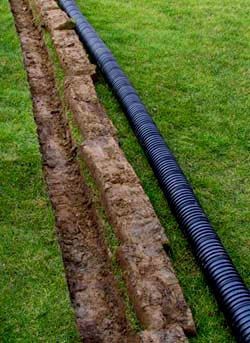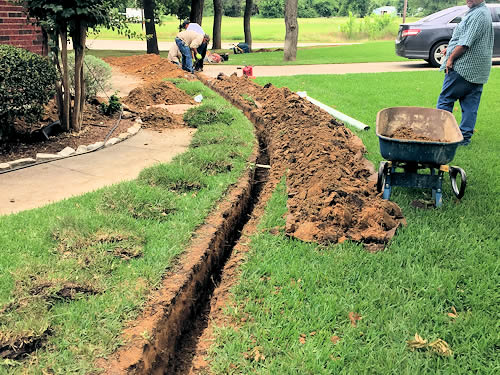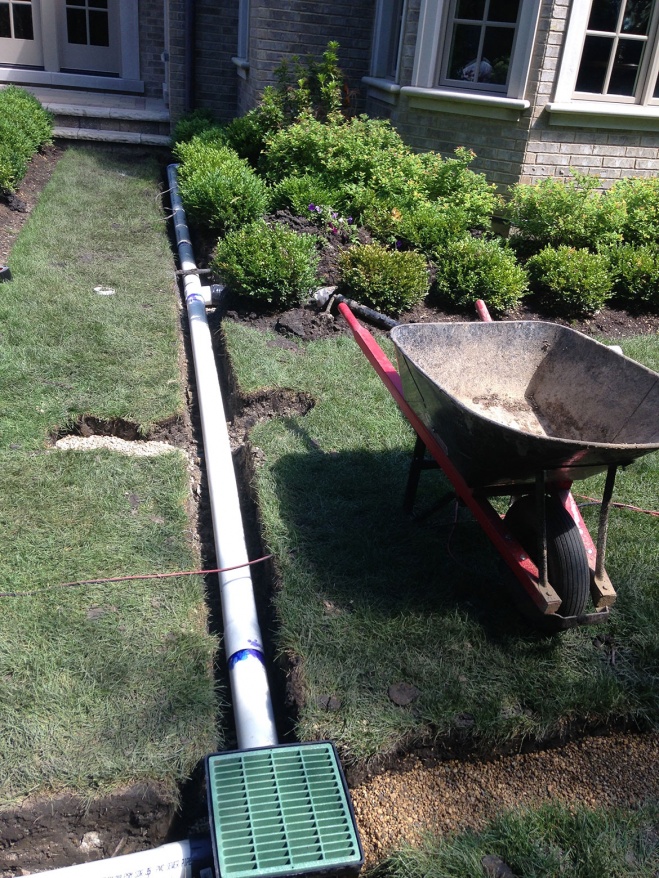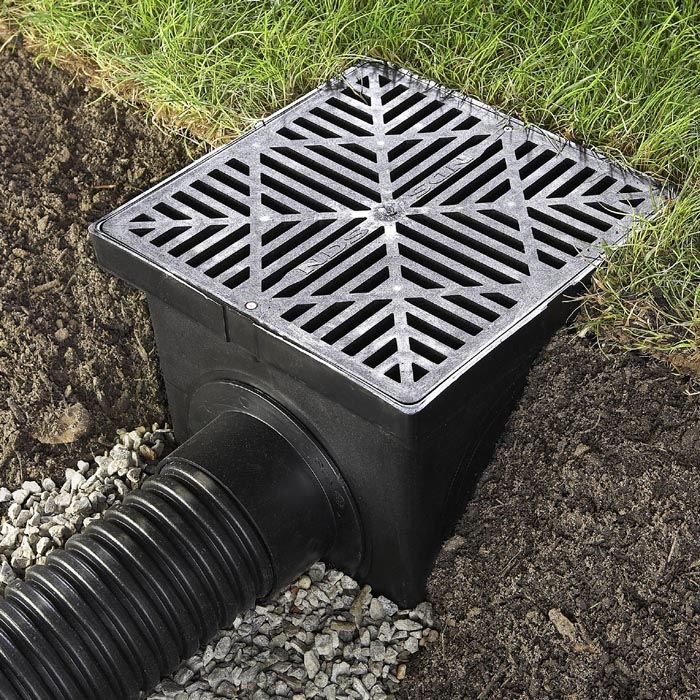Protect Your Property with Pro Outdoor’s
Expert Drainage Solutions!
Surface water is one of the largest nuisances you will find when identifying drainage issues. The most obvious clue will always be the appearance of standing water that lingers for days after a rain event. Another clue to look for is the feeling of a “squishy” or saturated area of lawn. This area will often be completely soaked; meaning that a contractor will not be able to run a mower over that space, which causes labor inefficiencies. This issue would need to be addressed not only for ease of maintenance reasons, but also to eliminate a potential breeding ground for mosquitos, the prevention of fungus related issues and other potential damage.
Drainage systems, such as storm drains and sewers, are essential for preventing flooding. They work by removing excess water from the streets, homes, and businesses. without them, the rainwater would just sit on top of the ground and eventually overflow causing massive flooding.
It’s important to have a good drainage system because it helps prevent flooding and keeps water from seeping into your home or building. A good drainage system will also help keep the soil healthy by removing excess water and preventing erosion.
Surface Drainage Systems collect water that flows over the surface of the earth. It is often composed of ditches, gutters, and storm drains. Subsurface Drainage Systems collect water that has seeped below the surface of the earth. It is often composed of pipes or tiles that are buried underground. Slope drainage systems use the natural slope of the land to move water away from the buildings and structures. Downspouts and gutter system are used to collect water from roofs and direct it away from buildings.
Drainage failure is the inability of a drainage system to move water away from a property. This can lead to extensive damage to the property, and can even cause structural failures. There are many things that can cause drainage failure, including blocked or collapsed pipes, incorrect design or installation of the drainage system, and subsidence (the movement of earth).
There are a few diseases that can be caused by a blockage in the water drains. One example is cholera, which is a bacterial infection that can cause severe diarrhea and vomiting. If the water drains become blocked, it can lead to an increase in the amount of wastewater and sewage present in an area, which can then contaminate the local water supply and cause people to become ill.







Our Local Missouri Service Areas: Where We Provide Drainage Solutions
We provide expert drainage solutions to the following locations and their surrounding communities:
To optimize this FAQ for SEO and user navigation, I have integrated internal links that point to high-value service pages, contact forms, and related lawn care solutions offered by Pro Outdoor.
Frequently Asked Questions (FAQ)
How do I know if my property has a drainage problem?
The most obvious sign of a drainage issue is standing water that remains for days after a rain event. You may also notice “squishy” or saturated areas in your lawn that are too wet to mow. Addressing these issues is vital to prevent fungus, mosquito infestations, and potential property damage.
How can a professional drainage system prevent flooding?
Drainage systems—including surface drains, subsurface pipes, and gutter downspouts—remove excess water from your home, yard, and business. Without an efficient drainage system, rainwater sits on the surface and can eventually overflow, leading to massive flooding and water seeping into your building.
What are the different types of drainage systems available?
There are several ways to manage water:
- Surface Drainage: Collects water flowing over the ground via ditches or storm drains.
- Subsurface Drainage: Uses buried pipes to collect water that has seeped below the surface.
- Slope Drainage: Utilizes the natural land slope to direct water away from structures.
- Downspouts & Gutters: Specifically designed to move water from your roof away from the foundation. If you aren’t sure which you need, you can schedule an expert consultation to assess your property.
What causes a drainage system to fail?
Drainage failure occurs when a system can no longer move water away from a property. Common causes include blocked or collapsed pipes, incorrect initial design, or poor sprinkler system installation that interferes with runoff. Failure to fix these issues can lead to extensive structural damage.
Can poor drainage affect my health?
Yes. Stagnant, blocked water can become a breeding ground for pests like mosquitos and may increase the presence of wastewater or sewage. If your lawn is consistently saturated, it may also require specialized fungicide applications to treat resulting mold and soil diseases.